Working from home has become increasingly popular in recent years and with the COVID-19 pandemic in full swing, it’s officially part of the “new normal” we keep on hearing about. It comes with some fantastic benefits: no commute, fluffy slippers and pets on hand for moral support. I actually think it’s possible to be more productive from home than in an office, but it does take some getting used to – not to mention a hearty amount of self-control. If you’re struggling to make the transition to remote working, this article is here to help you find that perfect balance between comfort and discipline so that you can be your most productive self.
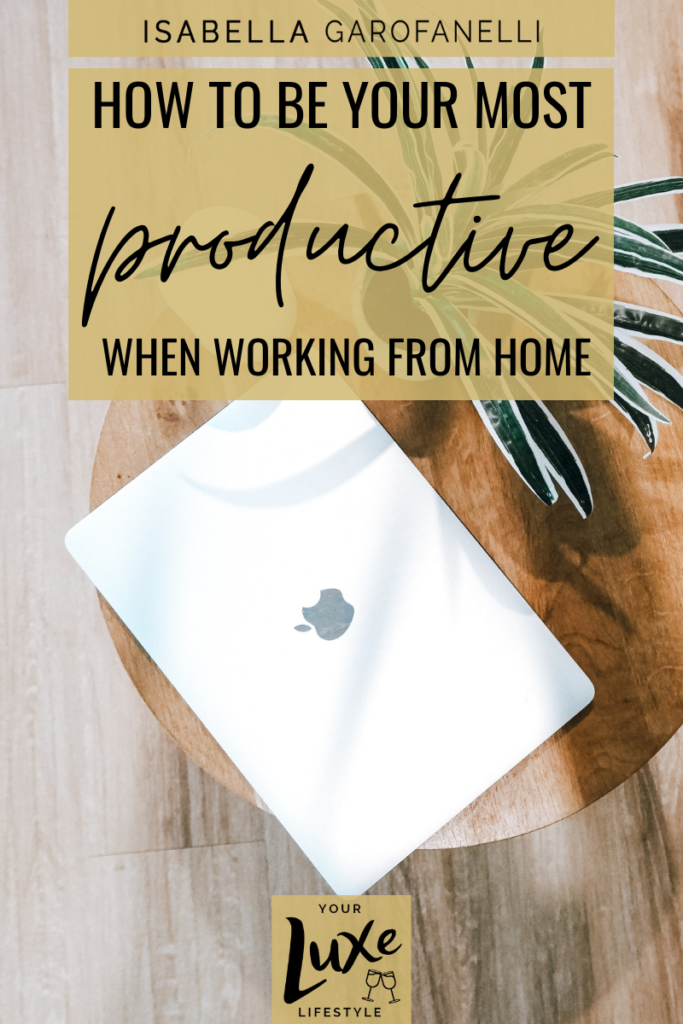

Set A Schedule
You probably wouldn’t rock up to your office at midday and stay there until 10pm, so treat your home office the same way. Trust me, set “office” hours are the key to success when working from home. It will increase your focus tenfold and make working from home feel… well, normal.
Your schedule should include breaks, too. If you take an hour’s lunch break in the office, do the same thing at home – no eating al desko. Regular breaks refresh your brain and help you get much more done in the long run.
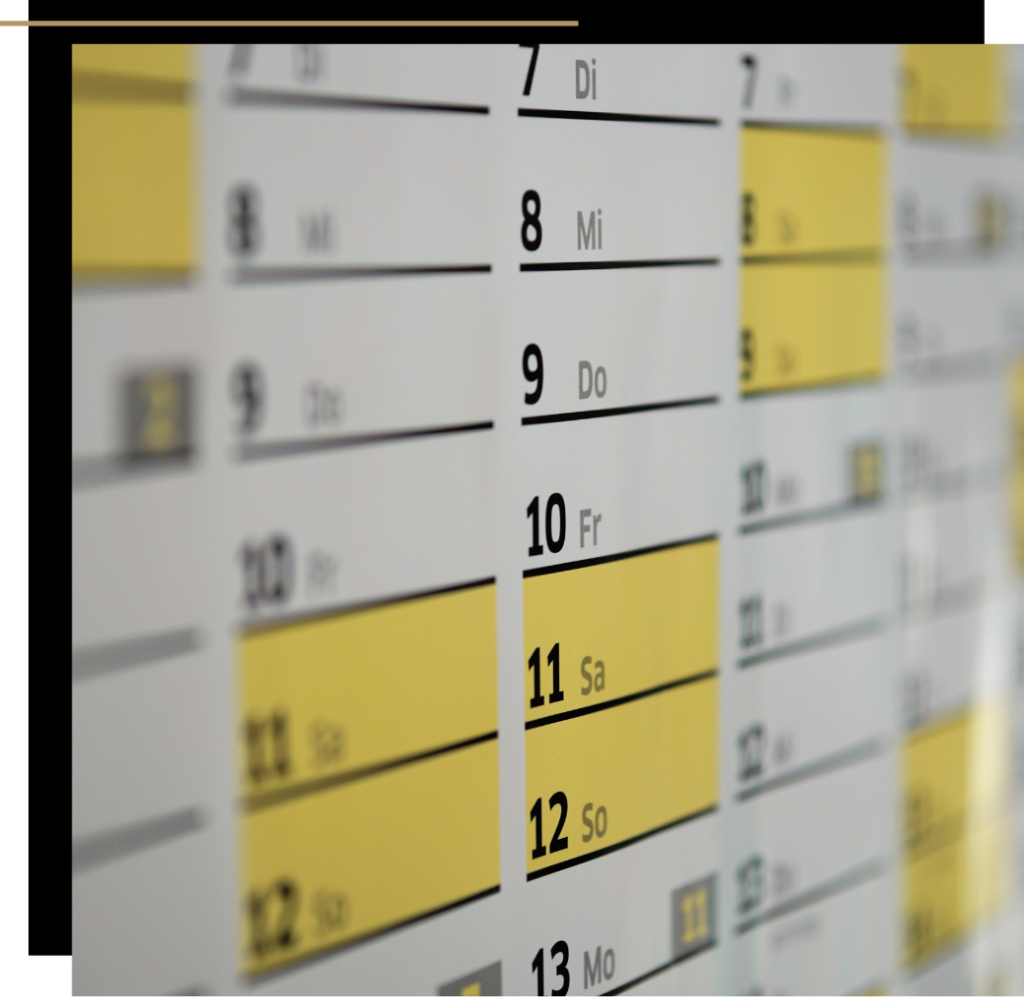

Use a Time Management Technique
If you’re feeling a little lost now that you’re working from home, a time management technique might be exactly what you need to refocus. Here are a couple of popular ones to try:
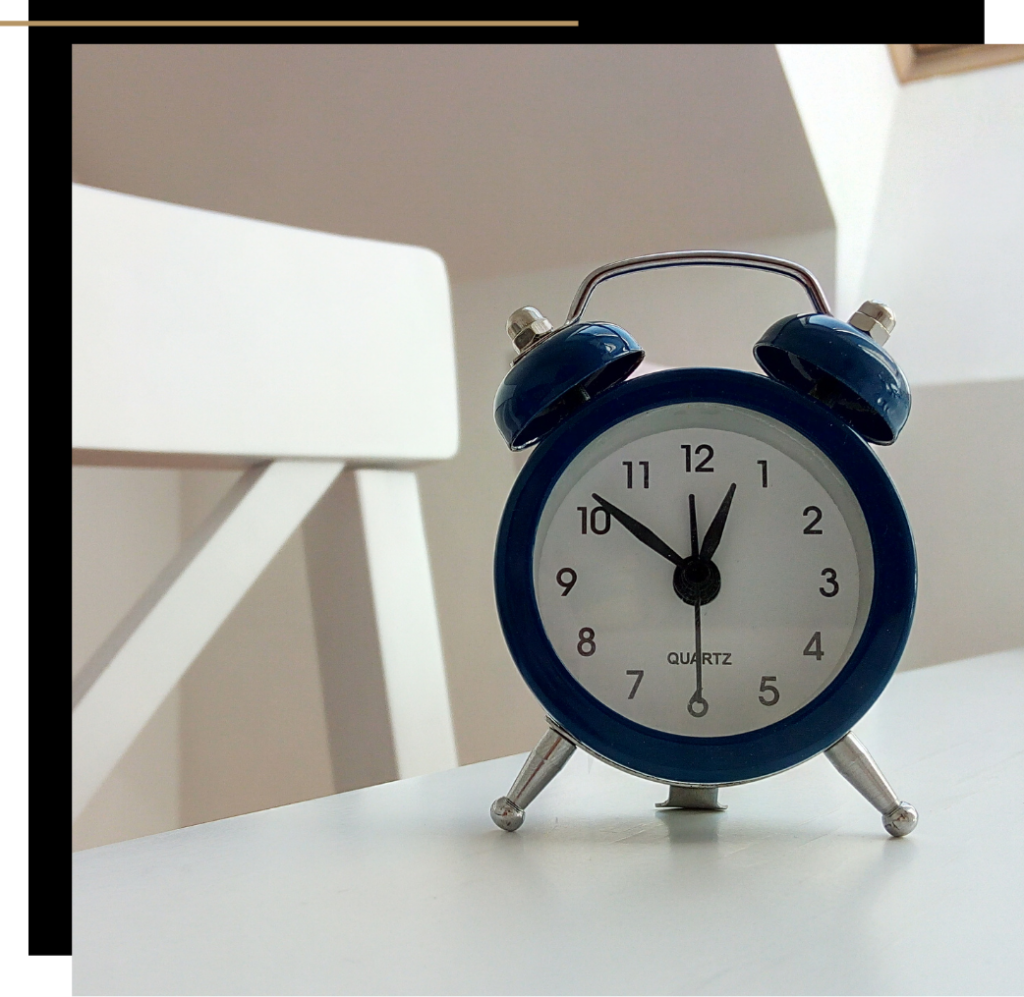
The Pomodoro Method
This one’s simple, but it’s really helpful for concentration. Set a timer for 25 minutes and work uninterrupted for that length of time – no checking your phone or making coffee. Once the timer goes off, take a five-minute toilet/tea/phone break. Repeat this four times and then at the end of the two hours, take a longer break.

Planning your day according to the Pomodoro method might look something like this:
- 9 – 11: working for 25 minute intervals with 5 minute breaks
- 11 – 11.15: a 15 minute tea break
- 11.15 – 1.15: working
- 1.15 – 2.15: lunch hour
- 2.15 – 4.15: working
- 4.15 – 4.30: a 15 minute tea break
- 4.30 – 5.30: final hour of work
Oh, and if you’re wondering why the Pomodoro method is so-named, it’s because the man who invented it (Francesco Cirillo) used a tomato-shaped timer.

Time Blocking
I really like this one. When you first start working from home, you can sometimes feel a bit like a headless chicken: pecking away at everything but failing to achieve anything significant. What I like to do is put my tasks into categories and then create time blocks for each one. It really sharpens my focus.
For example, rather than checking your emails several times per day, set aside some time first thing in the morning to manage your inbox. If you’ve got meetings, try to schedule them back-to-back rather than stop-starting, as this can break your focus.
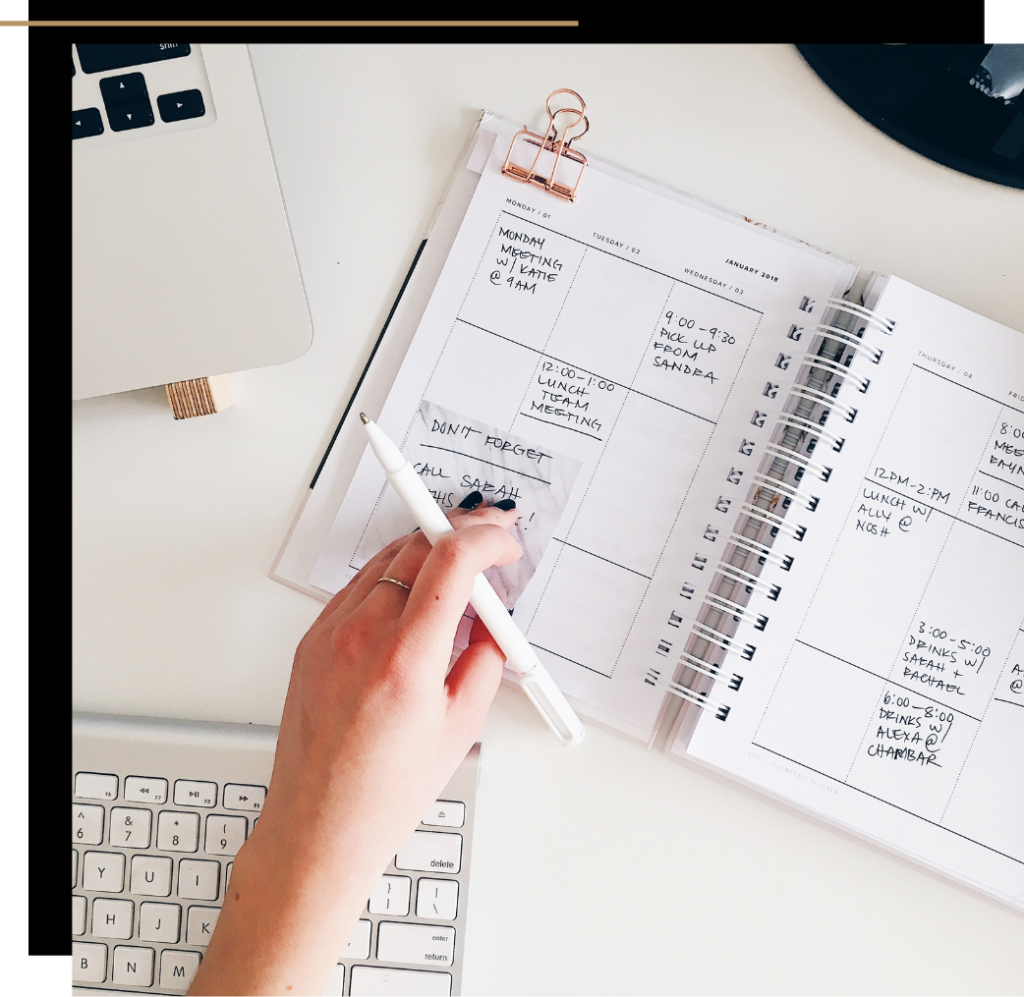
The Eisenhower Matrix
This sounds a lot cooler than it is, but it really is a helpful way of prioritizing tasks. It helps me to keep a clear head on busy days when I’ve got working coming out of my ears. This technique is also known as the 4Ds, or the Urgent-Important Principle.
Draw a 2×2 grid on a piece of paper and then label each square with the 4Ds:
- Do
- Defer
- Delegate
- Delete
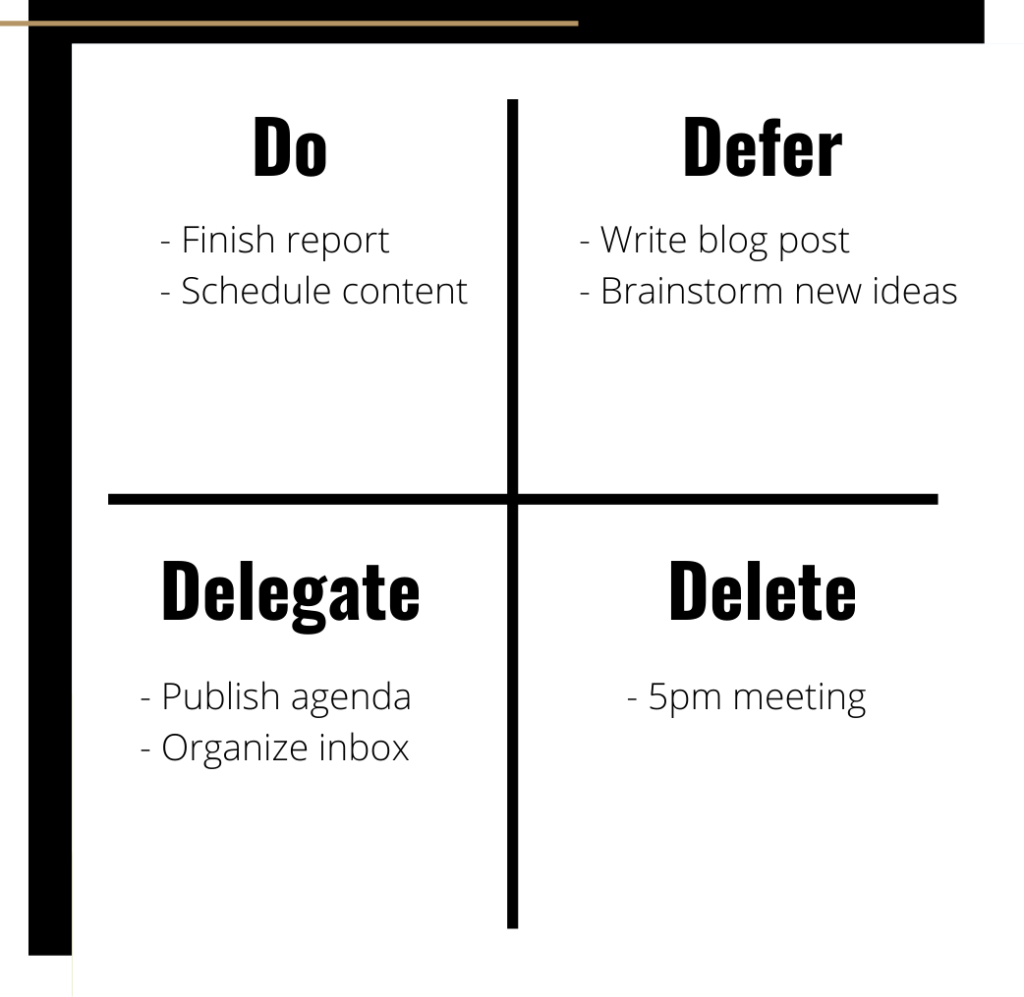
This helps you get your head around what needs to be done today, what can wait until tomorrow, what you can delegate to your underlings and what’s unnecessary after all. I definitely recommend this one for visual learners.
You can choose just one of the above techniques, or you could combine them. For example, you could time block and set your schedule using the Pomodoro method.

Create A Great Home Office
You need a dedicated work space. Boundaries are essential when working from home and it’s important to keep work and play physically separate.
But what if you’re short on space? Obviously, an entire room would be ideal but it’s not strictly necessary. For months, I just split my kitchen table in two (figuratively, of course.) One end was for working and the other was for eating. I was very strict with myself about it and it proved to be a very effective solution, focus-wise.
For more on setting up the perfect home office, check out this guide.
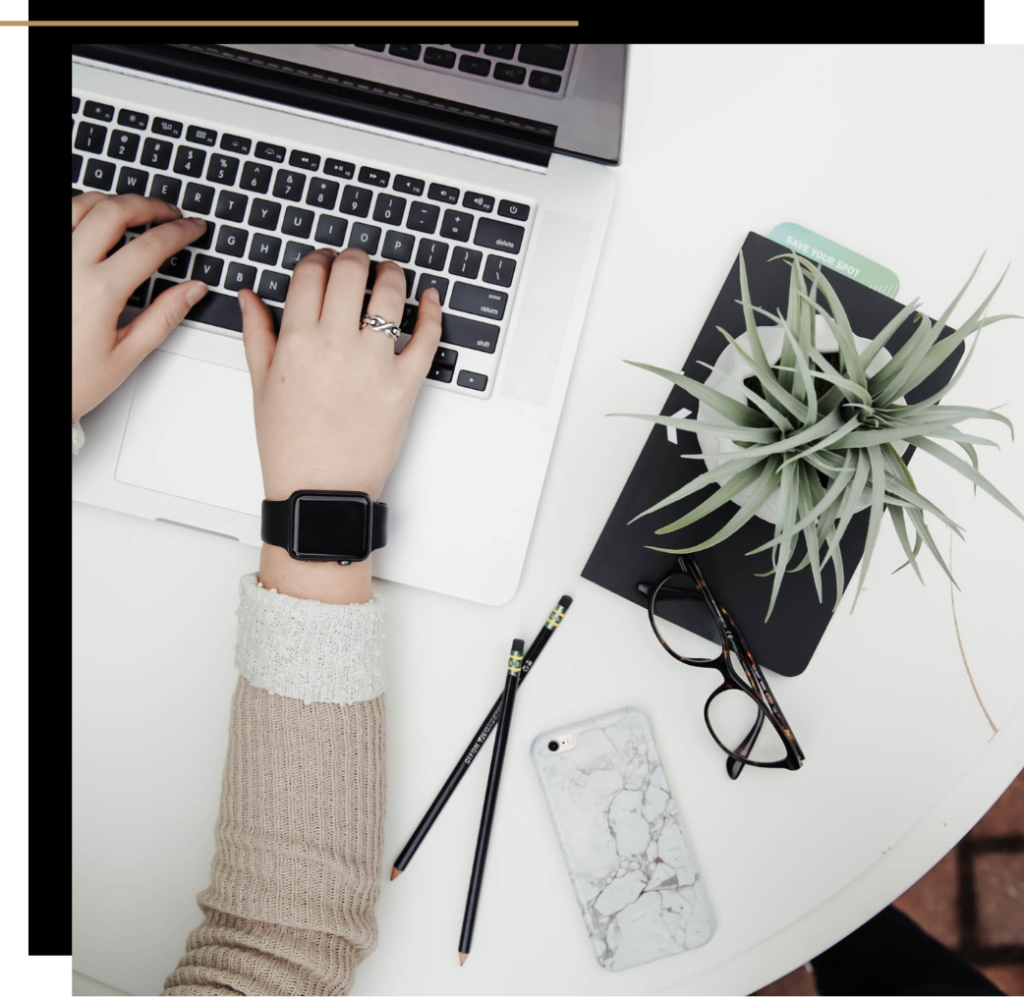

Switch It Up
A change of scene can do you the power of good. Whilst I recommend that you stick to one designated workspace in your home, I’m also all for a bit of coffee shop working – if you’re able to at the moment, of course. Depending on the restrictions in your area, your local library could also be a good place to really concentrate and get some serious work done.


Dress Smart – but Comfortable
I don’t know about you, but I find it really hard to work in my PJs. Often, dressing smartly really puts you in a productive frame of mind. It’s a way of sending yourself a message that it’s time for work, not play. On the other hand, do you really need to wear a stiff collar or a suit when you’re staying home? In my opinion, the best work from home clothes are suitable enough to venture out in public, but nice and comfortable, too.
I find it’s important to make sure that your upper body is business-casual. For example, you could always wear joggers but a Zoom-appropriate top or jumper. I don’t recommend working in sleepwear, but comfortable slippers are always great. Your colleagues never need to know…


Lock Your Phone Away
Or at least, leave it in the other room. It’s only going to distract you – I know it and you know it.
Of course, you might need your phone for business-related issues, in which case I do recommend getting a second, separate one – it really helps with work-life balance. Talk to your boss about it or just get a second SIM and use your old phone for work. That way, you can keep your Words With Friends notifications out of sight and out of mind while you’re working and resist the urge to check your work emails at weekends.


Set Boundaries
It’s hard to get work done when your housemates and/or family members are popping in every five minutes for a chat. Sit them down and gently explain that as much as you enjoy their company, you really need to be able to work uninterrupted. If the people you live with are still going out to work, take a moment to make it clear that just because you’re at home doesn’t mean you’ve suddenly got ample time to run errands on their behalf.


Remember the Perks
It’s important to stay positive right now, so rather than thinking about how much you miss the office banter, try to focus on the good parts of remote working. For example, think about how much time and money you’re saving on the commute and what a positive difference that could make in another area of your life.


Be Kind to Yourself
Self-compassion is vital. Working from home is a huge adjustment and it’s natural to come into difficulties. Don’t put pressure on yourself to adapt overnight and remember that you’re not always 100% productive in the office, either. In fact, you’re probably getting a lot more done than you think without colleagues to distract you. The difference is that in the office, you don’t feel as guilty because you’re still physically in a work environment, even when you’ve been gossiping for the past half an hour.


Do you have any working from home productivity tips? Share them with me below! And whilst we’re on the subject of adjusting to “the new normal” why not check out this article on how to take care of your mental wellbeing during the coronavirus pandemic?
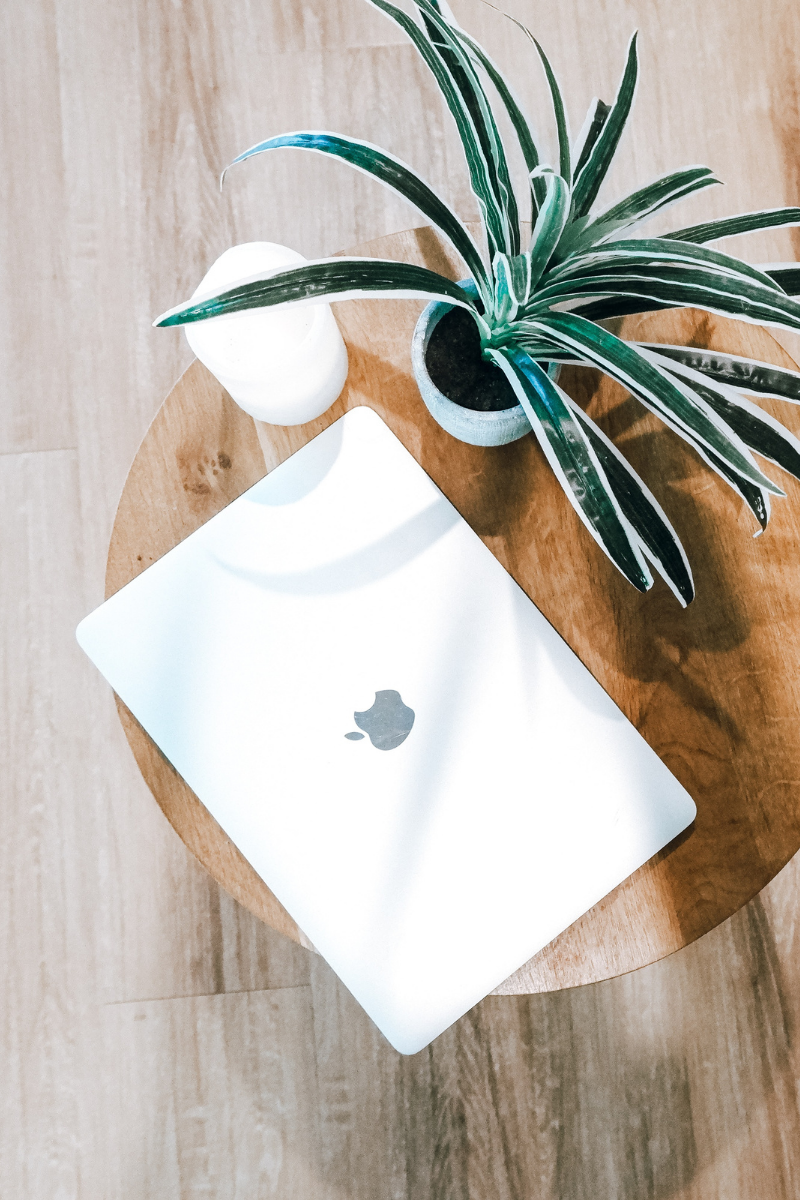



[…] is all about the best accessories to make your day more comfortable. Working from home can make us more productive, but it also comes with its own unique set of challenges. Noisy family members, a lack of space and […]